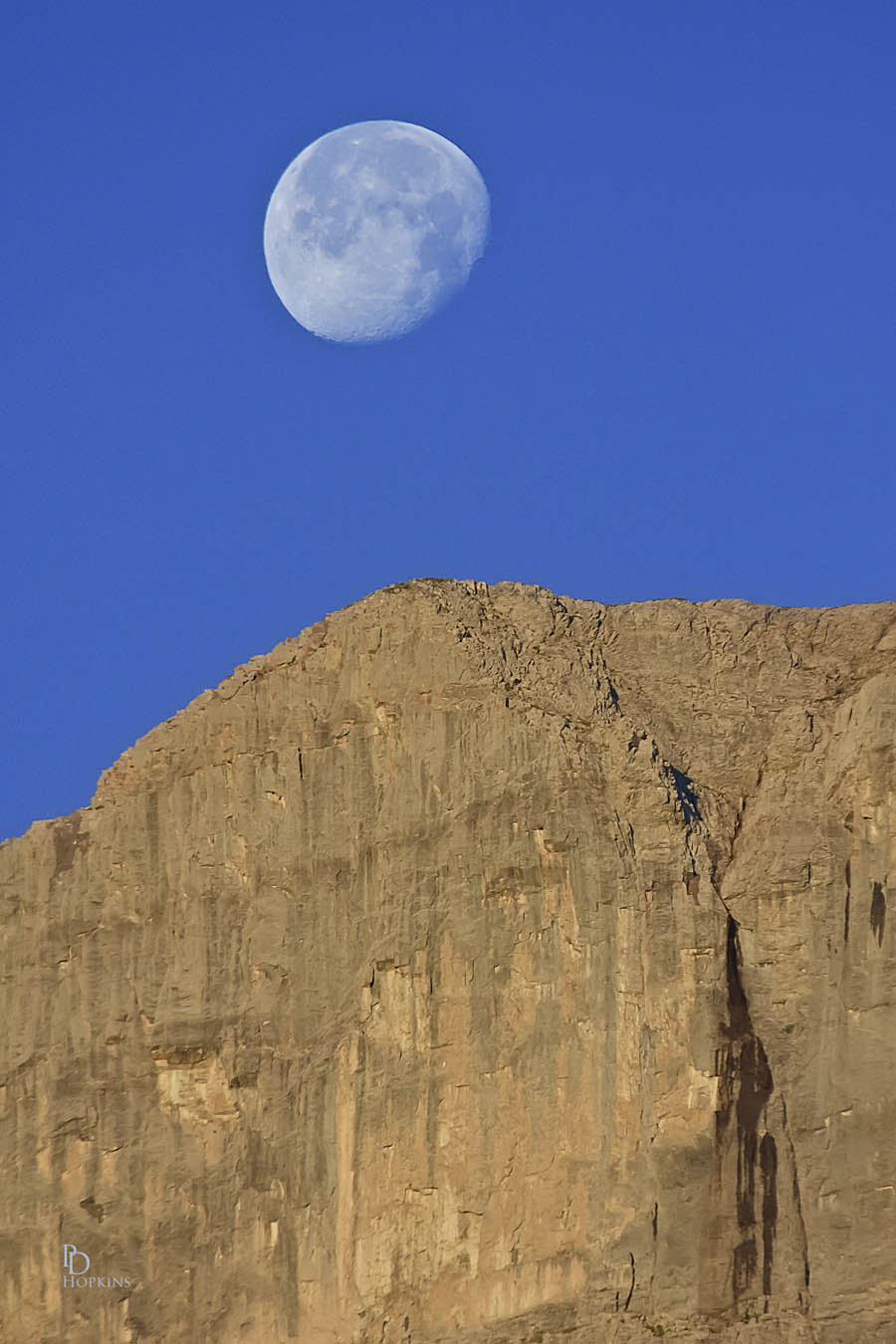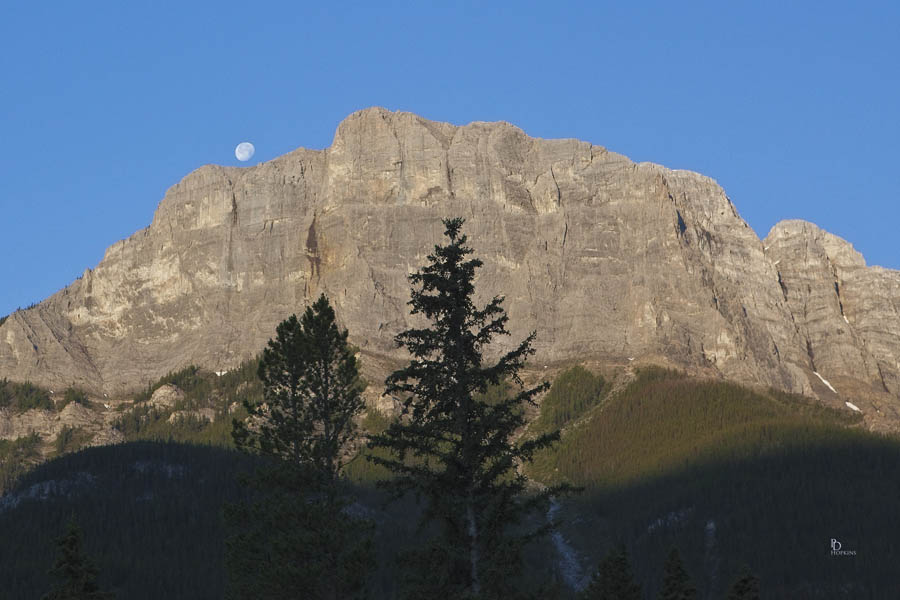I glanced outside this morning just after sunrise and noticed the “almost full” moon setting behind the mountains. I thought it looked interesting so I grabbed some quick photos.

This first picture, taken at 6:30 am shows the moon just before it passed behind this peak, called the Canmore Wall. The picture is a close-up (as close as you can be from 384,403 km (238,857 miles) away) using a telephone lens and a focal length of 640 mm. Note the yellowish colour of the rock due to the warm glow from the sun, still very low in the sky. Sunlight is composed of a spectrum of colors that ranges from violet and blue at one end to orange and red on the other. At sunrise or sunset, sunlight takes a much longer path through the atmosphere than during the middle part of the day. More violet and blue light is scattered out of the beam along the way, and so the light which reaches the human eye early or late in the day is more in the yellow to red part of the spectrum.

This second picture was taken only 4 minutes later than the one above. I had switched to a wider angle lens, using a focal length of 70 mm. You get the bigger picture, showing much more of the Canmore Wall. The sun is rising quickly and more of the colour spectrum is getting through, including the blue and violet light. The colour of the rock has changed dramatically to the more familiar gray colour you would expect. The rock will be gray in colour for most of the remainder of the day, until sunset approaches when the sun drops low in the sky and the light becomes “warmer” again. Also note that the moon is no longer above the peak to its left; it was directly above it in the prior photo. The moon’s position changes quickly and a short time later it was obscured by the higher peak to the right.
